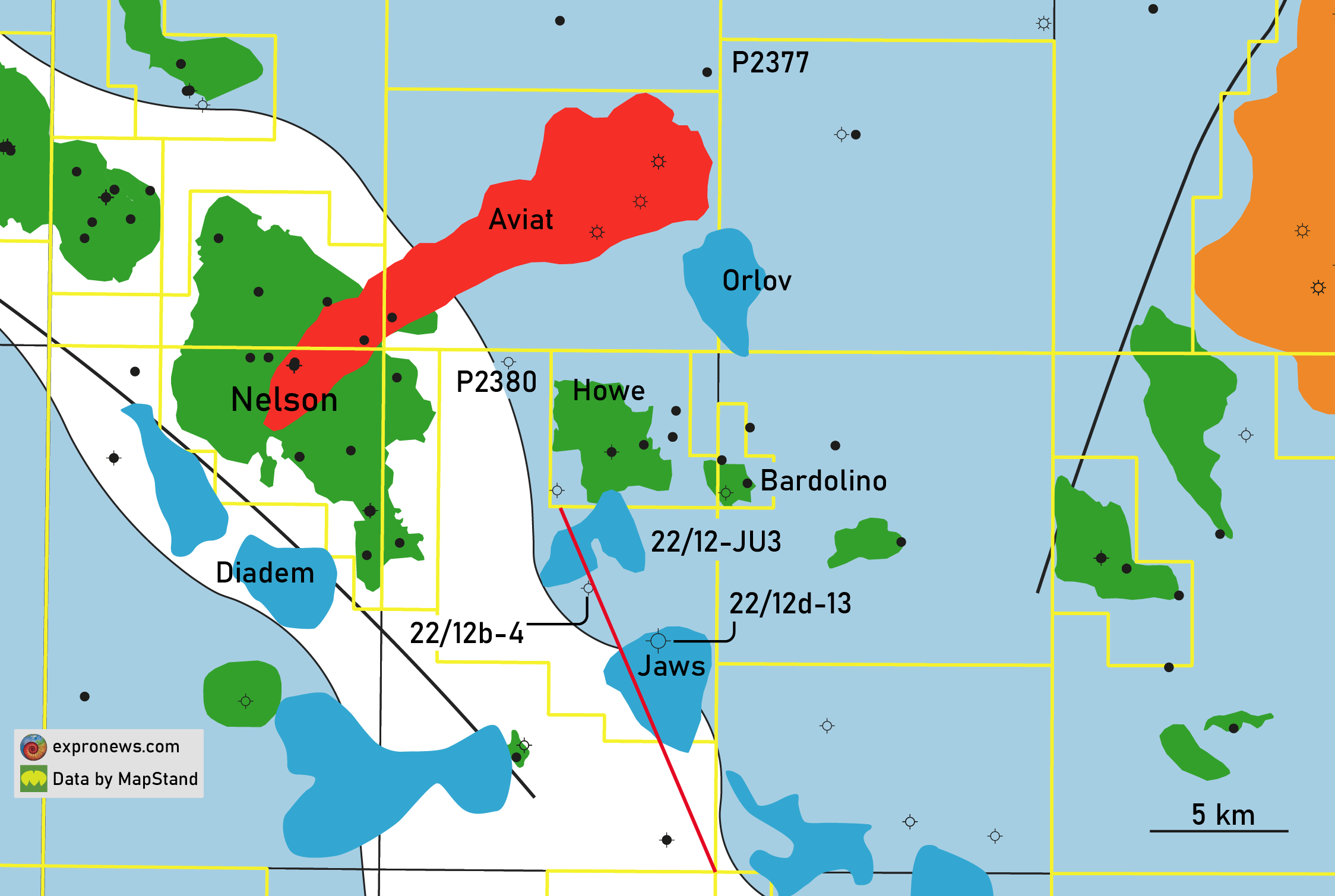Shell and partner Capricorn (50%) have completed well 22/12d-13 targeting the Jaws prospect to the southeast of Nelson in P2380.
Anticipated to hold up to 30 MMboe, a 31 m Upper Jurassic Fulmar sandstone reservoir of fair to good quality was encountered but it turned out to be water-wet.
The information was released by Capricorn yesterday when announcing their 2021 full year results.
Apache relinquished the licence covering the Jaws prospect in 2011, claiming that “technical evaluations failed to develop this lead as viable drilling prospects during the primary term of the licence,” whilst geological analysis of analogue plays identified reservoir presence as the critical prospect risk.

So, whilst Apache was correct about the viability as a drilling target, the critical geological prospect risk turned out to be incorrect.
Fault sealing against the Triassic Smith Bank Formation mudstones may now be a more probable candidate to explain the absence of hydrocarbons in this closure. As Solveig Helleren from the University of Stavanger explained in her talk at an online AAPG Conference yesterday, the Smith Bank Formation can also contain sandy intervals, which may result in fault sealing being less effective.
Following the completion of Jaws, Shell has now commenced or will very soon commence drilling the exciting Triassic Edinburgh cross-border prospect further north. In the meantime, the Diadem prospect just south of Nelson in P2379 will be drilled by Capricorn as the operator (50%) and Shell as a partner in Q2 this year. Shell also has a commitment to drill the Orlov prospect north of Jaws, which may happen following completion of Edinburgh.
A final interesting note in Capricorn’s annual report is the note that the company obtained two seabed cores in the so far undrilled East Orkney Basin north of the Moray Firth. This was done to better inform a decision to acquire 3D seismic data in the area, so it could be that lab analysis are to be carried out to find indications of a thermogenic gas source.
HENK KOMBRINK





